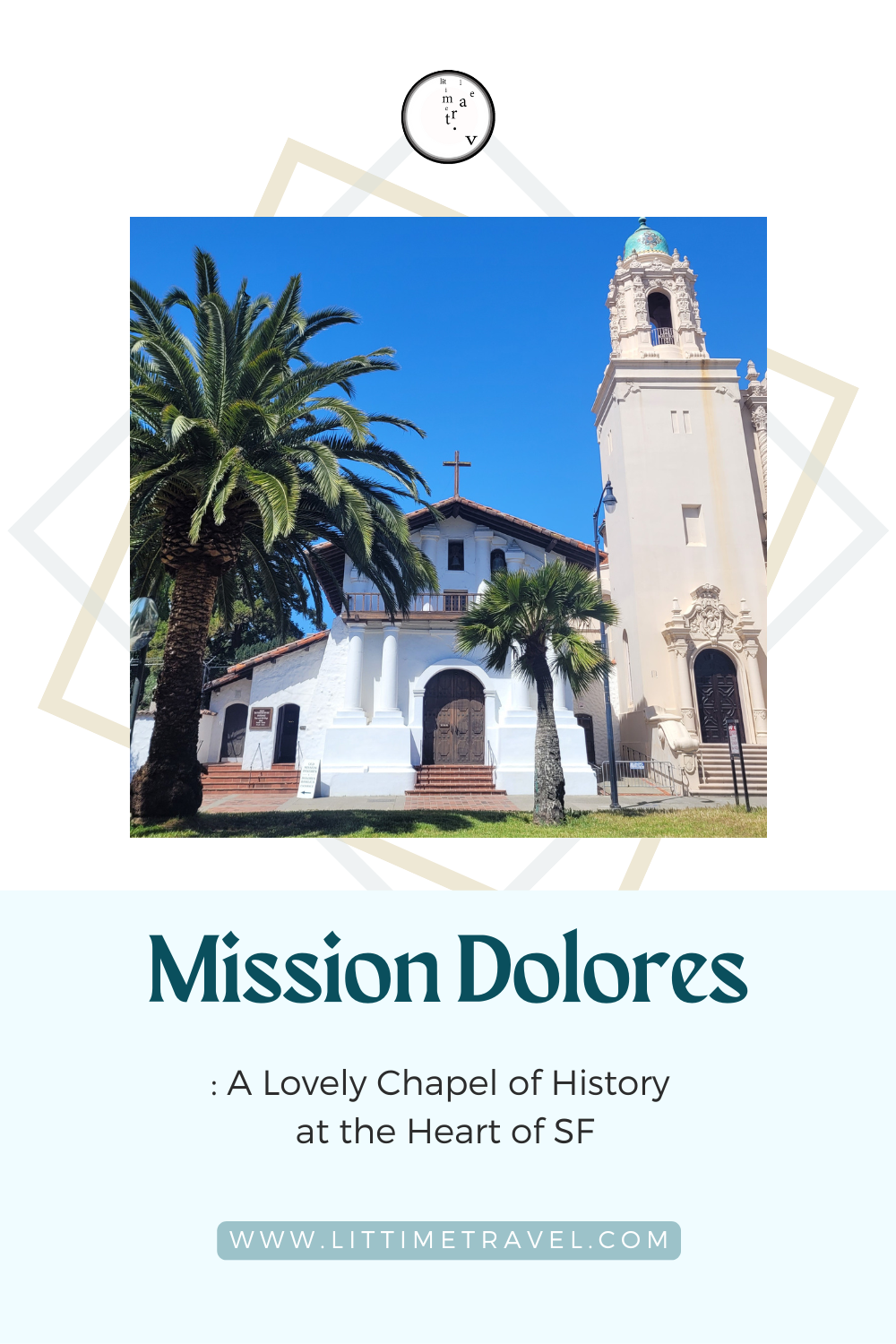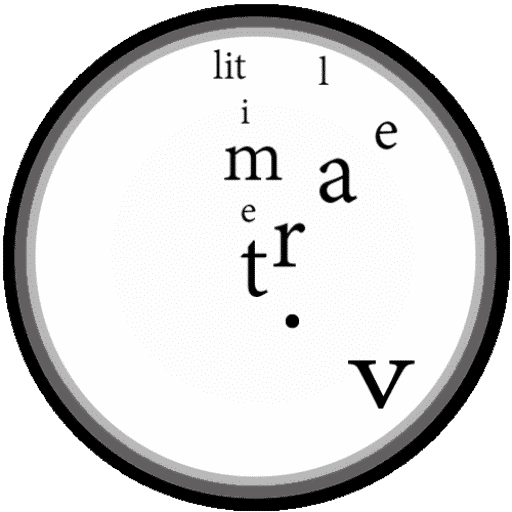
California missions hold a special place in my heart. I think it’s because I love history so much, to the point of majoring in it in college, that structures dating back to early Californian history mesmerize me so. And because I grew up near one, I have this unfounded affinity towards California’s twenty-one missions.
I remember first reading about them in a history textbook back when I was in elementary school. Then shortly after, when I was in fifth grade, I believe, I got to visit Mission San Juan Capistrano on a field trip. It was such a treat to step foot on the historical site. Reading about the place and then seeing remnants of where Native Americans and Spanish missionaries had once lived blew me away: it was like history coming alive.
After years of mostly focusing on visiting the best coffee spots and bakeries of the Bay, it occurred to me that I hadn’t visited any of its missions. And so, I finally embarked on a journey to Misión San Francisco de Asís, aka Mission Dolores.
⛪Getting to Mission Dolores
To get to Mission Dolores from Berkeley, I rode BART and then MUNI to get to Mission Dolores Park. (As someone who has traveled in San Francisco for some time now, I recommend avoiding the BART stations near Mission Dolores and instead using MUNI or the bus to get to the Park or the Mission directly.)

The gorgeous structure (shown below) right next to the Park was not Mission Dolores; it was a high school named after the Mission.

After a few minutes’ walk, I arrived at the intersection of 16th and Dolores Streets:

When I first saw the structures before me, I had thought that the beautifully-carved beige building was the Mission itself. But I soon discovered that the smaller chapel on the left was the actual Mission founded in 1776 (year of the Declaration of Independence!) and the ostentatious structure on the right was the “Mission Dolores Basilica” that was built much later in 1918 after the 1906 earthquake.

I arrived at 10 AM sharp to explore the sixth Californian mission established under Father Junipero Serra. (The mission is open every day, from 10 AM to 4 PM, EXCEPT for Mondays!) And as announced, the entrance door opened exactly at 10.

For an admission fee of $10 (1 adult), I got to enter through the gift shop to the chapel, view the sanctuary, go out to the area right next to the basilica, through a small museum, out to the cemetery, and then arrive back at the gift shop.

Update 8/27/2025: When I visited another morning (to purchase my Missions Passport), I got to hear the church bells ring!
Update 9/30/2025: But I was told that the bells are supposed to ring only during Mass times. So if you want to hear them ring, visit when Masses are scheduled!
⛪Inside the Historical Chapel
Mission Dolores was a small but lovely chapel, with historical facts about the building, the Spanish missionaries, and the Native Americans placed here and there along with a replica of what it would have looked like back around 1791.

What’s noteworthy about Mission Dolores is that it’s the oldest intact building in San Francisco! And it’s the only intact Mission Chapel of the 21 missions created under the direction of Father Junipero Serra.

According to the official pamphlet that was given out, the building still has its original redwood logs, held together with rawhide, supporting the roof.



The reredos (decorative altars) and the side altars were all crafted in Mexico, arriving in 1796 and then in 1810.


⛪Museum & Cemetery
Past the chapel, the diorama, basilica, and covered walkway is a one-room museum that used to be a classroom. There were historical artifacts like clothing and items of the Ohlone Indians and Spanish missionaries inside glass displays.




Once you exit the little museum, you get to the cemetery. In the middle stands a statue of Junipero Serra sculpted by Arthur Putnam, the famous Californian sculptor. The cemetery is also a garden, with roses gifted by the Golden Gate Rose Society growing here and there along with “traditional native trees, shrubs, flowers, and plants from the 1791 period” (Official Mission Dolores Website).


Also, the cemetery has an “Ohlone Indian ethno-botanic garden and examples of Native American plants and artifacts.” I think the biggest said Native American artifact in the garden is the hut behind the statue.

It was mind-blowing to think that the thousands of Ohlone, Miwok, and other First Californians who built and founded the Mission were resting underneath the very grounds I was walking around.

You leave the cemetery/garden by going back into the gift shop, through which you exit the Mission.

⛪Gift Shop
Inside the gift shop, there seemed to be more gifts for practicing Catholics (like rosaries and portraits of different saints) than items for tourists.


Some of the more general items for tourists included magnets, postcards, and these beautiful California Missions tiles:



I ended up getting the following to commemorate my visit to Mission Dolores:

Update 8/27/2025: I didn’t know when I first visited Mission Dolores, but this mission is one of the 10 missions where you can purchase your California Missions Passport. What’s a “California Missions Passport”? HERE is everything you need to know!)
You can’t get it at the other 11, so I highly suggest that you get it while you’re visiting Mission Dolores if you’re interested!

⛪Conclusion: So Worth a Visit!

Mission San Francisco de Asis was a nice historical site to visit – I’d recommend it to anyone who hasn’t been there yet. As a history buff, I’d drop by again and definitely check out the interior of the basilica that I couldn’t view properly. But there were a few things that could be improved. Some of them are…
- bigger pamphlet with more information and photos,
- maybe an interactive media or slideshow inside the museum,
- and lastly but certainly not least, a better restroom for tourists! The restroom at the Mission were blue, plastic containers out in the parking lot. 🙁
But considering the fact that the Mission “receives no public funds” and “rely completely on…voluntary offerings,” it’s completely understandable. Plus, taking that fact into consideration, the Mission is in great shape and doing a great job promoting its history.

P.S. There are loads of great bakeries and coffee spots nearby the Mission. Some of my personal favorites are Tartine Bakery, Craftsman and Wolves, and Stonemill Matcha, which all deserve their own appreciation posts!
P.P.S. Here are some more aesthetic photos of Mission Dolores! ⛪❤️












